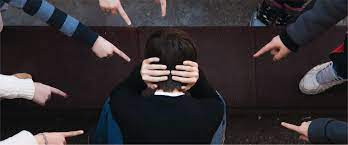
"Alright, class, let’s gather round and settle down. We need to start,” the teacher announced.
“What are we going to study today, sir?” huffed the loudest boy.
“Be patient, Tafadzwa, we’re about to look at a very important part of the curriculum.”
“Oh, please sir, I know! I know! I know! We’re going to learn prime numbers, aren’t we, sir?”
“No, not today — something far more important, something you will need in later life. In fact,” the teacher declared, in a very important-sounding voice. “We are going — to learn — all about…”
“What, sir?” chorused 30 voices loudly.
“Bullying. Yes, I am going to teach you how to bully!” The class groaned audibly.
“Oh, sir, we’ve done that before. We know that. It’s easy!” the loud boy shouted out.
- WHAT AN INTER(esting) VIEW!
- Parenting by degree
- School of sport: We still have a problem
- Robin Hood and parenthood
Keep Reading
“When did you learn to bully others?” the teacher asked…
Has that conversation ever taken place in a school? Have children been taught to bully? Who taught them? Of course not! The fact is, though, bullying exists, big time, all around us. We find it in families, in society as a whole, in businesses, in politics, in gangs — and yes, we find it in schools. It is there and we might wonder which came first: do people bully in society because they learned it at school or do children at school learn it from adults around them? Is it innate? Do they need to learn it or do they have the gift within them? But wait, bullying is not part of any curriculum; there is no syllabus on it. So how do they learn to bully? Consider the following.
“Alright, children, let’s press on. The first thing to do is gather a small crowd around you.”
“Like you have done now, sir, gathering us in…?”
“Be quiet! Next, select your target. Do your research. Ensure he is smaller, weaker, lower, quieter.”
“Sir, we’re smaller, weaker, lower, quieter than you.”
“That’s not the point! You’re taking it way out of context. Next, ensure no-one is watching. Tatenda, I thought I told you to close that door?”
“Sorry, sir”.
“Then, always have a back-up plan, someone important that you can use to call upon, should initial engagement not provide you with what you want. That is always helpful. Johnnie, stop fooling around now — just remember, I will be seeing the Head later this morning.”
“Yes, sir. Sorry, sir”.
“Moving on, proceed to make clear demands and threaten them if they are not forthcoming. Do you get the picture?”
“Yes sir, very clearly.”
“Good, because now you have to write an essay on it and you had better do well or else you will be in detention for the rest of the term. Get it?”
Do we get it? Do we see the picture here? Bullying might be defined as getting something from someone else by force or fear. It is like prime numbers — it is about who is numbered as being the prime person. By that definition then punishment (not discipline) could be seen as bullying; it is putting pressure on youngsters to do what authorities want. It is applying fear (though the fear has gone for most youngsters, even if authorities do not realise that). It is fear pressure as opposed to peer pressure. So, where do children learn how to bully? They do learn it from us at school (and at home) without us teaching it. Must we find a bully to bully them? No fear! No pressure!
- Tim Middleton is the executive director of the Association of Trust Schools [ATS]. The views expressed in this article, however, are solely those of the author in his private capacity and do not necessarily represent the views of the ATS.
- Email: tim@atszim.org website: atszim.org










